``Pioneering the Future of People and Lifestyles'' System Kitchen The New ``STEDIA'' Aims for Lifestyle Innovation | Innovations Eye BtoB Business Media
Mr. Masami Seki, Manager of Kitchen Planning Section, Cleanup Development Planning Department, Mr. Shoma Takeuchi, Chief of Design Section (from right)
On February 1, 2022, Cleanup underwent a full model change of its main medium- to high-end system kitchen "STEDIA" and started accepting orders. This is the first full model change in four years since its launch, and it incorporates a number of new innovations, including the unique “dual top facing kitchen,” which is different from the popular flat facing kitchen and built-in facing kitchen.
Through the development of the new "STEDIA", how was the innovation of the kitchen, "realizing the ideal life without trying hard"? We interviewed Masami Seki, chief of the kitchen planning section of the company's development planning department, who served as the theme leader of the new "STEDIA" development team, and Shoma Takeuchi, chief of the design section, who served as the design leader.
The appearance of the new “STEDIA” is the first step in realizing the long-term vision of “opening up the future of people and lifestyles”
Hiroshi Takeuchi of Cleanup talks about his enthusiasm for the new “STEDIA” at the product launch president
I am saying, "Let's make 'STEDIA' the number one kitchen in the industry." Although the products may change due to the full model change of the company, the desire to make the 'STEDIA' brand the number one in the industry has not changed."
On January 26, 2022, Hiroshi Takeuchi, president of Cleanup, a major housing equipment manufacturer, said at a new product launch held at the company's flagship showroom "Kitchen Town Tokyo" (Shinjuku-ku, Tokyo). .
The presentation was held in conjunction with the full model change of the main mid-to-high-end system kitchen "STEDIA" for the first time in 4 years since its launch in 2018. On February 1, the company started accepting orders for the new "STEDIA" incorporating new innovations such as the "dual top face-to-face" described later.
In 1983, Cleanup released the mid-to-high-end model "Clean Lady" with the catchphrase "You can buy a system kitchen". Since then, “Clean Lady” has become a best-seller as Cleanup’s main product. Its successor model, “STEDIA,” together with “Cleanlady,” has led the mid-to-high-end system kitchen market for 39 years. Continuing from the past 39 years, the new "STEDIA" has undergone a full model change with the aim of supporting the company's backbone and driving the market for the next 3 to 40 years.
The main feature of the new "STEDIA", which started accepting orders on February 1, is "dual top face-to-face". The facing counter on the living room side is higher than the kitchen side, and a step is provided to hide the sense of life.
Despite the strong headwinds of the corona crisis, the housing equipment industry has seen a trend toward recovery in demand. In particular, it has been successful in capturing growing demand for renovations, and Cleanup has revised upward its financial forecasts (consolidated) for the first half of the fiscal year ending March 2022.
The company has formulated a long-term vision, "Cleanup Sustainable Vision 2030 (CSV30)," with the theme of "opening up the future of people and lifestyles." In April 2021, the new medium-term management plan “2021 Medium-term Management Plan (2021-2023)” (hereinafter referred to as “21 Medium-term Plan”), which will be the first stage, will start.
The 2021 mid-term plan includes ``development of demand for existing businesses, conversion from low profits (strategy 1)'' and ``creation of new customers through new businesses (strategy 2)''. The release of the new "STEDIA" is at the top of that "Strategy 1". We aim to make a new leap forward by proposing a kitchen space that captures changes in lifestyles and the awareness of users due to the corona crisis.
Familiarize yourself with the "dream face-to-face meeting", a number of new cornerstones that overturn the common sense of the kitchen
The product concept of the new "STEDIA" is ""You can realize your ideal life without trying hard." kitchen". In response to the growing popularity of face-to-face kitchens, Cleanup's newly proposed "dual-top face-to-face" is the highlight of this full model change.
It is similar to a "flat facing" kitchen where the sink, worktop (work table) and facing counter are integrated in one piece, but there is a slight step on the counter. This step is the point, hiding the worktop and hands from the view of the living room side, and creating a sense of openness where you can see the living room from the kitchen.
We also added a function that "immediately cleans without effort", which greatly reduces the hassle of cleaning. For example, the "Bikote Worktop" is standard equipment, and the wide type "Ryu Rail Sink" is added.
Equipped with a “Bi-coat worktop” that removes oil stains simply by wiping with water
While maintaining the characteristics of the current rail sink, the water flow from the faucet steadily flushes the garbage generated during cooking toward the drain, but the sink is larger than the conventional type, creating a space where you can temporarily place your dishes while working. Secured. The worktop is equipped with the Bi-Coat worktop, which was popular with the company's high-end flagship model CENTRO, which removes oil stains simply by wiping with water (Bi-Coat worktop).
The “slide pantry” with a height (2360 mm / 236 cm) and a large sliding door storage is also newly introduced. In addition to coordinating with the dual top facing and kitchen surface materials, you can freely combine the top, middle, and bottom pedestals to store tableware, stock food, home appliances, and even trash cans. Contributes to keeping the LDK (living, dining, kitchen) space clean.
Dual top face-to-face is also characterized by a high degree of freedom in terms of design. For example, there are 45 door colors, 5 ceramic, 3 corian, 6 acrylic, and 5 melamine colors for the facing counter.
Also, as the name “dual” suggests, it is a unique face-to-face kitchen with faces on both the kitchen side and the living or dining side, so it is possible to coordinate the kitchen side and the living or dining side with different impressions. For example, the facing counter, side veneer, facing cabinet, and facing door on the living room side are colored in natural wood, while the door and side veneer on the kitchen side are crystal white. Or conversely, both the living room and the kitchen can be unified in a wood grain cherry blend color (Class 4).
The main target is the new construction segment in the 3rd and 40s and the renovation segment in the 5th and 60s. Recently, the demand for face-to-face kitchens is increasing even in renovations, so we are strengthening our remodeling support, such as a plan that makes it possible to install a “dual-top face-to-face” by making use of structural walls that are difficult to remove.
"Kitchen that allows you to realize your ideal life without trying hard"
Product development of the new "STEDIA" began by analyzing and understanding the flow of thoughts and actions of users. . We conducted a questionnaire survey of people who had considered purchasing a kitchen within the past five years, and investigated their awareness of kitchens.
As a result, the elements of the “ideal dining kitchen” envisioned by the respondents are “face-to-face kitchen” (37.7%), “openness, brightness, etc.” (34.4%), “storage capacity, organization” Easy to clean, etc.” (28.2%), and “Easy to clean, hard to get dirty, clean, etc.” (23.9%). Among them, the development team paid particular attention to the vague admiration of the user base for "face-to-face kitchen" and "open feeling".
However, a surprising fact has been revealed through the company's investigation. In terms of the market, the popularity of face-to-face kitchens is certainly high. However, although 42% of those considering purchasing a kitchen within five years had considered a flat-faced kitchen, only 45% of them actually purchased a flat-faced kitchen.
Here, the development team realized the existence of the ideal and reality surrounding the face-to-face kitchen.
Analyzing users' thoughts and behavior reveals that in the early stages of considering purchasing a face-to-face kitchen, they vaguely gather information, expand their imaginations, and have a vague admiration for their ideal space and lifestyle. Then, in the mid-term period, we enter into concrete considerations, and as we begin to think about the budget and actual use, the reality gradually becomes apparent. In the latter stage of the study, we consider detailed specifications in order to realize what we have considered.
Among them, the user's "things that worried (concerned) while considering the flat face-to-face" were "water splashing, oil splashing, smell, sound, etc." (48.0%, multiple answers, same below), "Feasibility in terms of floor plan and facilities" (44.4%), "line of sight" (36.5%), "price" (33.1%), etc.
These are exactly the realities that can be seen while considering the face-to-face kitchen. The direction of the development of the new "STEDIA" has become apparent, eliminating the gap between the ideal and the reality that users encounter, and creating a "kitchen where you can realize your ideal life without trying hard".
How did the full model change of "STEDIA", which Cleanup put the company's future on the line, actually proceeded? Masami Seki, Chief of the Kitchen Planning Section of the Development Planning Department, who served as the theme leader of the new "STEDIA" development team, and in addition to the design leader, the design section who was in charge of "Ryu Rail Sink Wide" and "Dual Top Face-to-Face". I will talk to Chief Shoma Takeuchi.
The "dual top face-to-face" kitchen creates a "beautiful space that hides the sense of life"
The concept is "a beautiful space that hides the feeling of life". Is this related to the fact that "STEDIA" has become closer to the LD (living / dining) space through the full model change?
Seki That's right. In our conventional products, the flat face-to-face was the main proposal for customers considering a face-to-face kitchen. However, while "I want to take advantage of the openness (of the flat facing)", on the other hand, "I don't want to see the hands (of the person working in the kitchen) completely visible from the living room". It had become an issue.
After that, the price part was also a hurdle to purchase. As a result, survey results show that more than half of the customers who considered purchasing a flat facing kitchen did not choose a flat facing kitchen.
In order to "hide the feeling of living", the facing counter on the living room side is higher than the kitchen side and there is a step. I'm also particular about this height
Takeuchi This time, we have prepared two patterns: a low type with a low level difference between the facing counter on the living side and the kitchen side, and a high type with a high level difference. The low type is close to a flat face-to-face, and the steps are kept as low as possible to ensure a sense of openness, while the work surface and the inside of the sink, which give off a sense of life in the kitchen from the view of the dining room, are well hidden. The high type securely hides the hands of the person working, and is designed to make effective use of the hidden hand space (provided with a large storage space and a kitchen outlet on the stepped part).
Using the back guard on the rising part at the back of the kitchen, we set the height not only to block the line of sight, but also to prevent water and dirt from spreading to the living room side.
It means choosing a feeling of openness close to flat face-to-face, or choosing to make effective use of the space at hand that is firmly hidden.
Takeuchi Yes. We are proceeding with development along these two axes. We plan using the same materials, but assume a completely different user base.
Seki As a result, it is becoming mainstream for customers who did not purchase a flat face-to-face kitchen to choose a built-to-face kitchen. Many carpenters build counters on the dining side in I-shaped kitchens, hide hands with walls, and create counters and under-counter storage according to customer requests.
However, there are many cases where it is difficult to match the appearance of the kitchen with the design of the fixture work, for example, in the sense of proposing an ideal space for the customer. Therefore, as a manufacturer specializing in kitchens, we thought it would be advantageous to propose a face-to-face kitchen that matches the customer's ideal space as a complete ready-made product.
If it is a ready-made product, it will be easier for the customer to imagine the finished product, rather than face-to-face with a full order. Proposals through showroom displays, presentation sheets created at the time of quotation, and color simulations are almost the same as the image of the kitchen seen from the customer's relaxing living space.
Actually, I also hear that there is a gap between the image before construction and the finished form. (The design and coordination of the living space and kitchen) can be completed in a cleanup, and the price competitiveness is also high. confident.
While it is difficult to realize the "ideal face-to-face kitchen" for customers, Mr. Cleanup is proposing the "dual-top face-to-face" as the third face-to-face kitchen following the flat face-to-face and the built-to-face face-to-face. .
Seki That's right.
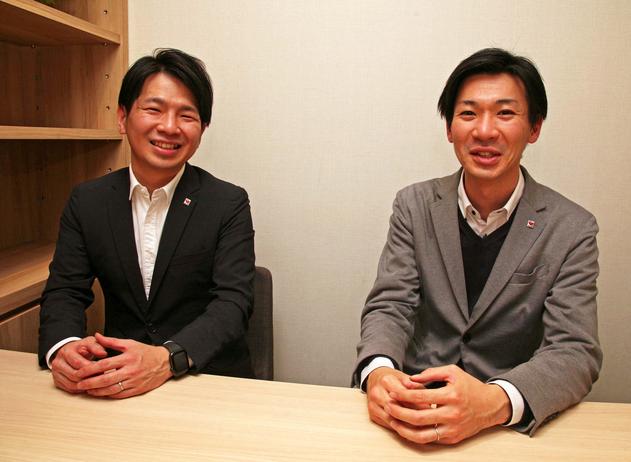
Variety of functions that make you look beautiful even if you don't try hard
What do you want to highlight most about this full model change?
Seki That's right. After all, the face is "dual top face-to-face", but I think the most fundamental is "beautiful coat worktop" and "flow rail sink".
Cleanup's special feature is "quickly get beautiful without trying"
Seki That's right. This is one of our company's unique strengths, and we have received very high evaluations from customers who have adopted it.
The Bi-Court worktop, which was well received at CENTRO, is now available at STEDIA. The "Ryu Rail Sink" was originally standard equipment on the "STEDIA", but this time we added a wide type.
I also feel the attention to detail in making the "Ryu Rail Sink" a wide type.
By making it wide, I think that there will be a big advantage in terms of "hiding the feeling of life" while using the conventional type of "flow rail sink" as a base.
Originally, we took into consideration the fact that the Takeuchi Corona wreck caused us to spend more time at home, resulting in more housework and more dishes to wash. In fact, there was a time when our company was promoting remote work throughout the company, and I also had more opportunities to eat at home. When that happens, the sink is overflowing with dishes for three times a day.
The wide type was born from the background of the increase in so-called "home time" and the increase in washing.
A wide type of "Ryu Rail Sink", where the water flow from the faucet flows steadily toward the drain port during cooking. Secure a space where you can work while temporarily getting up for washing
Takeuchi Yes. But more than that, there was also the perspective of how to make use of the conventional type of "flow rail sink" (in the new "STEDIA").
With the wide type, for example, you can use the width of the sink by moving the detergent rack to the back, and you can maximize the depth of the sink by moving it to the side. The “Ryu Rail Sink” has a shape in which the faucet and drain port are on one side, so there is a large space on the other side. The point we were particular about this time was that by moving the rack, the wide space could be used effectively in both the width and depth directions.
There was a desire to launch such a spacious sink that cannot be found in other companies on a large scale.
A world of kitchen design closer to the living room
What aspects of the design of the new "STEDIA" did you focus on?
TakeuchiOriginally, when we renewed “Clean Lady” as a new brand “STEDIA” in September 2018, we strengthened the design centered on harmony with the LDK space. As a result, we began to develop a spatial image from the image of the kitchen as a facility. In this full model change, I wanted to evolve it further and make it possible to plan (kitchen) that blends better into the space.
What is your image of a kitchen that blends into the living space?
Takeuchi Originally, the design of the kitchen has spread from a single piece of equipment to a space. However, in reality, the majority of plans are to install a wall on the construction side (on the construction side) to block the living room side from the kitchen side. Therefore, at our company, we removed the wall and focused on the design of the entire kitchen into the living space.
Recently, the number of customers who are particular about the materials and equipment around the kitchen is increasing. Looking at SNS such as Instagram, people say, "I want to create a space like this," or, "I want to make this place with special materials, not white wallpaper."
Therefore, for the color of the door on the living room side facing the dual top, you can choose almost all colors of the variations prepared for the door on the kitchen side this time. So are the side panels. Except for some automobiles, I don't think there are many other industrial products where you can freely choose the combination of materials and colors and patterns.
In terms of design and the wide range of color variations, the wood grain and stone grain of the surface materials such as doors are reproduced with highly expressive UV coating.
We are also particular about the details of the design and color. For example, Class 3 "Sonata" reproduces the color, grain, and texture of cherry and walnut materials with UV coating. The unique high matte finish and chamfered wood end create a solid wood-like taste.
Takeuchi That's right. For example, this door for Class 3 "Sonata" was developed with great care by the designer in charge of the door. In recent years, more and more customers are choosing such wooden doors and matte doors to realize a design that blends in with their space. This time, we achieved a matte texture like solid wood with UV coating, which is one of our strengths, and added it to the color variations.
SekiI think that this kind of effort is also a pursuit of how to balance appearance and function. In fact, in this full model change, the element of coexistence of design and function was discussed in many areas.
Because of Takeuchi, this time we are hiding (in a sense, design) the functionality that is our strength, but you could also say that we are making the most of it. In fact, the kitchen itself is solidly made of stainless steel, which has excellent functionality such as durability and cleanability, and the surroundings are covered with facing counters and side veneers to enhance the design. In that sense, the key point of this time is that the design is divided into two parts, the living room side and the kitchen side. The living room should create ideals, while the kitchen should look at the reality.
Combining the “thoughts” of each department for the full model change of the main product
What was the most difficult part of development?
As for myself, I thought that being in charge of the new "STEDIA" product was a big job.
It's a main product
Seki That's right. Therefore, it was difficult to decide the direction of the new "STEDIA". It's hard to decide a new direction when you can't see anything.
Because of course "STEDIA" is our core product, but the price range is very wide, and many people are involved, from house builders to local builders. . In other words, it is a product that has so many faces, and there are so many people involved in the company.
Therefore, we received quite a lot of requests within the company for this development. I think it was very difficult to continue searching in the absence of answers, including not only sales volume and price, but also how to create products that customers would choose.
How about you, Mr. Takeuchi?
Takeuchi As Mr. Seki just said, "STEDIA" is an important product that holds the fate of the company, and everyone in every department has a strong opinion that "it should be done this way." It was difficult to put it all together.
In addition to the design, I was also in charge of the "Ryu Rail Sink Wide Type" and "Bi Coat Work". Equipment investment is required, which imposes a burden on the company.
How did you persuade them?
TakeuchiLooking back, I think it was important to do a thorough introduction simulation and to out-top with CG and prototypes. Regarding the "dual top face-to-face", we were able to propose at a relatively early stage that such a cool kitchen could be realized at such a competitive price and that profits could be secured. Seeing that, I think each department was convinced and moved. As a result, we were able to take the next step, how to make this and how to sell it.
We cannot approve a large capital investment unless we can expect a certain amount of profit from the development of the "Bi-Court Worktop" in "STEDIA". Fortunately, the company decided to give it a try this time, and President Takeuchi also sent out a strong message internally, saying, "Let's sell the new 'STEDIA'!"
The kitchen will become more sympathetic to customers' free ideas
What do you value most in product development?
Seki Recently, customers often check information on SNS etc., have a lot of knowledge, and their requests are diversifying. I think the best thing is to incorporate such requests more and more, make it easy to sell at the site, and make the customers who use the product happy down to the smallest detail. In that sense, we believe that "STEDIA" should respond to the detailed requests of our customers, especially in the functional part of the kitchen, which is our specialty.
STEDIA will continue to meet the needs of our customers and will continue to evolve.
Seki Originally, the product name "STEDIA" is a coined word that combines the English "Steady" and "Diamond", and it means "refining the functions and design required for a system kitchen". It contains the thought that As the name suggests, it is important to continue to refine functions and designs.
What is Takeuchi's motto?
Takeuchi The design aspect has been strengthened with this “dual top face-to-face”. But I think the point that captures the hearts of customers who actually visit the showroom is the functionality. As a specialized manufacturer, the key point is how to make proposals to customers in order to make the most of the functional aspects of the product.
So, while maintaining the high level of functionality inherited from "Clean Lady", we will realize a design that will blend in well with the living space in the sense that it will look good on social media, and that will make you think, "Oh, that's cool." Only then will we be able to make the most of our unique functions such as the “Ryu Rail Sink Wide” and the “Bikote Worktop.”
In that sense, as a designer, it is important to make the most of the kitchen's functions. Conversely, the strength of "STEDIA" lies in its functionality, so I think the point of this product design was not to impair functionality by design being too advanced.
What kind of kitchen would you like to make in the future?
SekiYes, there are requests from within the company, etc., for strong items that will drive kitchen sales. In terms of our company, it is an item like the industry's first "floor container" developed in 1999. This is an innovative attempt to turn the kitchen's dead space into drawers for storage. Many customers have supported this, and it is still widely used in our kitchens. It would be great if we could develop such an epoch-making item.
What kind of kitchen would you like to make?
A long time ago, Takeuchi, for example, it would have been common to assume that white doors and stainless steel worktops were hot sellers in the kitchen. Today, however, consumer needs are diversifying, and I think we are in an era where various requests are coming out in detail. Among them, this time, we have made it possible for you to freely choose the material and color of the facing counter, side veneer, door, etc. I believe that this is also possible because sales tools such as color simulations and presentation sheets created when estimating are in place.
I think that the design and layout of the kitchen will continue to increase in the direction of more and more freedom in the future. Currently, kitchen layouts are narrowed down to a certain extent, such as I-shaped, L-shaped, and island-shaped, but layouts will become more diverse. Also, I think that various units and parts will become independent, like sectional kitchens, and that they will be combined more freely, so that various styles of kitchens can be assembled.
It may be possible to go beyond the current mainstream simple construction kitchen and move closer to a completely custom-made component kitchen like haute couture.
It takes a lot of time and effort to listen to the customer's requests in detail and realize them, but it will be solved by the mechanism. Under such circumstances, I think that the kitchen will become more accessible to customers' free ideas.

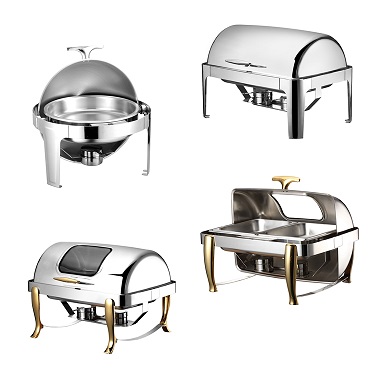
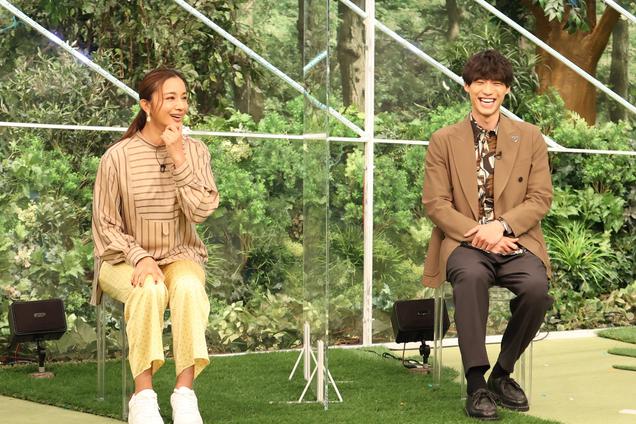


![lifehacker lifehacker LifeHacker LifeHacker A carabiner that is convenient for cutting packaging at the entrance. Excellent sharpness for medical blades! [Today's life hack tool] lifehacker lifehacker LifeHacker LifeHacker A carabiner that is convenient for cutting packaging at the entrance. Excellent sharpness for medical blades! [Today's life hack tool]](http://website-google-hk.oss-cn-hongkong.aliyuncs.com/drawing/223/2022-3-2/28016.jpeg)
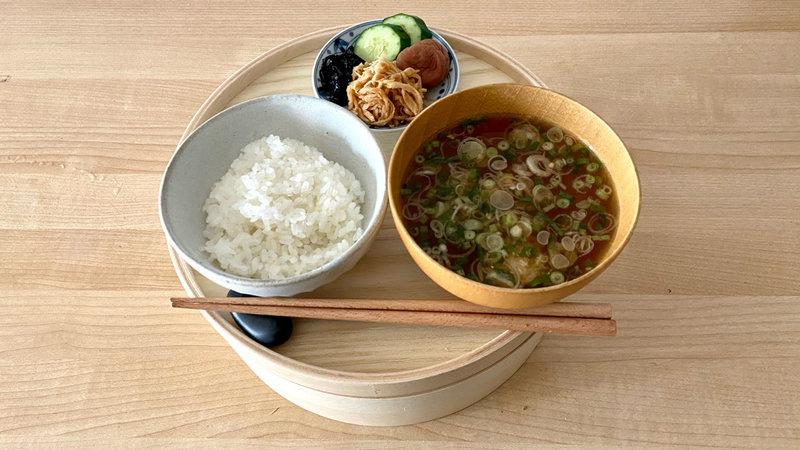
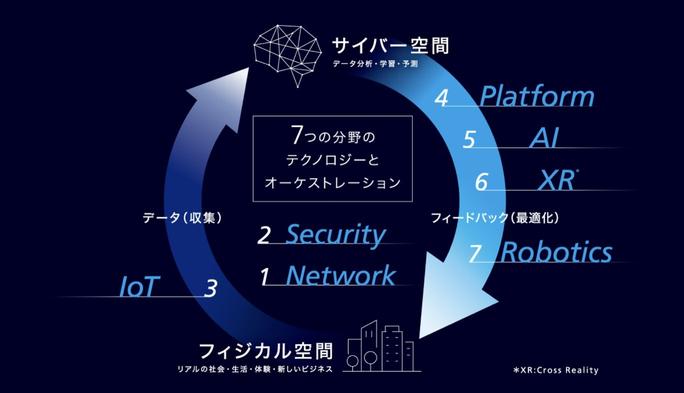
![lifehacker lifehacker LifeHacker LifeHacker [2021] 7 Recommended Dishwashers | Introducing High Cospa & Compact Products lifehacker lifehacker LifeHacker LifeHacker [2021] 7 Recommended Dishwashers | Introducing High Cospa & Compact Products](http://website-google-hk.oss-cn-hongkong.aliyuncs.com/drawing/223/2022-3-2/30293.jpeg)
Kitchen Equipment Every Restaurant Needs
The IKEA wood box was a great help in preparing breakfast! There are too many other uses ~
lifehacker lifehacker LifeHacker LifeHacker [2021] 7 Recommended Dishwashers | Introducing High Cospa & Compact Products
Just put it on the cafe feeling at once!Enriched Cafe Item in Nitori (January 24, 2022) --Excite News